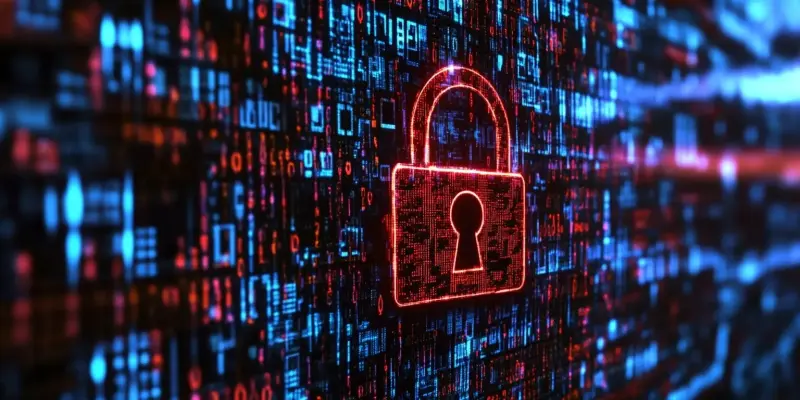Imagine a scenario where the failure of a water treatment facility or power utility leads to chaos, impacting millions of lives. This is not a far-fetched idea, but a harsh reality driven by the vulnerabilities in industrial control systems (ICS) that are integral to our essential services. A revealing report by Censys discovered over 430 such systems accessible via the Internet, posing severe security risks. This exposure highlights the inadequacy of traditional defense strategies and the urgent need for a shift towards robust digital protection measures.
Vulnerabilities in Industrial Control Systems
Security Risks in Accessible ICS
Many ICS managing vital services like power grids and water treatment plants are alarmingly accessible online. The Censys report’s finding of over 430 such systems accessible through the internet accentuates the gravity of the issue, leading to serious security implications. Industrial control systems that were once isolated and manually supervised are now connected and digitally managed, making them susceptible to cyber threats. This connectivity, while beneficial for operational efficiency, serves as a double-edged sword, opening gateways for potential cyber-attacks to exploit.
The growing reliance on cloud infrastructure and remote monitoring has translated into vulnerabilities that were previously non-existent. Advanced cyber attackers can exploit these online systems to disrupt essential services, causing widespread disturbances. The borderless nature of cyberspace further complicates matters, demanding a radical overhaul of conventional defense mechanisms. Adequate protection measures must be put in place to safeguard these critical infrastructures from being compromised, ensuring that society continues to function seamlessly.
Transforming Traditional Defense Strategies
In the digital age, sticking to conventional defense mechanisms like physical surveillance and access control is no longer sufficient. Traditional strategies were built around physical premises, but today’s threats transcend these boundaries and invade the digital landscape. As industrial control systems are a critical backbone to essential services, transitioning to a comprehensive security strategy that incorporates both physical and digital defenses becomes imperative.
The shift to a digital-centric defense model requires robust cybersecurity frameworks capable of counteracting sophisticated cyber threats. Tailored protection measures, including continuous monitoring, vulnerability assessment, and real-time threat detection, are vital components of modern defense strategies. Striking a balance between operational efficiency and fortified security is challenging but necessary. This transformation not only enhances the resilience of industrial control systems but also establishes a sustainable framework for dealing with future cyber challenges.
Challenges and Solutions in AI-driven Cyber Threats
AI in Cybersecurity: A Double-Edged Sword
Artificial Intelligence (AI) introduces both unprecedented opportunities and formidable challenges in cybersecurity. While AI is undeniably a powerful tool, its evolution has significantly compounded the complexity of cyber threats. AI’s capability to create highly convincing impersonations and orchestrate attacks that overwhelm traditional defenses is particularly concerning. This scenario has led to the adoption of adversarial training in defense systems, where AI autonomously develops attack and defense strategies, akin to the dynamics of a technological arms race.
Such developments have intensified the need for advanced cybersecurity measures. AI-driven attacks require equally sophisticated defense mechanisms. Adversarial training helps defense systems anticipate and counteract AI-generated threats, becoming an essential element in modern cybersecurity. However, this arms race between offensive and defensive capabilities necessitates constant advancements and investments to stay ahead of potential threats.
Addressing AI-driven Social Engineering
AI-driven social engineering poses a significant threat to the stability of democratic institutions and societal harmony. These highly sophisticated methods can exploit societal divisions, fuel disinformation campaigns, and undermine trust in public systems. The ability of AI to mimic human behavior convincingly, coupled with its capacity to process vast amounts of data, makes it a potent tool for social engineering attacks.
However, the same AI technologies can also be leveraged to enhance cybersecurity defenses. Advanced AI tools can significantly improve threat detection, vulnerability assessment, and cyber intelligence gathering. Implementing AI in defensive operations provides a substantial advantage in identifying and neutralizing potential threats before they can cause harm. To effectively leverage AI’s defensive capabilities, it is essential to foster collaboration across various sectors and ensure a unified approach to cybersecurity.
A Unified Response to Cybersecurity Threats
Collaboration and Shared Principles
An effective defense against the evolving cyber threat landscape demands a unified response across all sectors of society. Collaboration throughout supply chains and technological networks is essential to create a cohesive defense mechanism. By establishing shared principles and fostering open communication channels, stakeholders can develop a coordinated approach to securing digital infrastructure. This collaboration not only strengthens physical well-being but also plays a crucial role in maintaining national security.
Strong public-private partnerships are necessary to address the multifaceted nature of cyber threats. Combining resources, expertise, and intelligence from various sectors leads to more robust defenses and a collective effort in ensuring cybersecurity. Transparent communication and trust among all participants foster a productive environment where information can be shared freely, leading to more effective solutions against cyber threats.
Moving Forward: Immediate Actions Needed
Imagine a scenario where a sudden failure of a water treatment facility or a power utility causes widespread chaos, affecting millions of people. This is not just an imaginary situation, but a disturbing reality driven by the vulnerabilities in the industrial control systems (ICS) that oversee vital services. A revealing report by Censys uncovered over 430 such systems being accessible through the Internet, posing significant security threats. This situation accentuates the weaknesses of traditional defense strategies and underscores the immediate need to adopt more robust digital security measures.
The integration of industrial control systems into everyday operations makes them attractive targets for cyberattacks. As the interconnected nature of our essential services grows, so does the risk of breaches that can have catastrophic impacts. Strengthening ICS cybersecurity is not just an option; it’s a necessity to protect our infrastructure, ensure public safety, and maintain societal stability. The staggering number of exposed systems calls for urgent, effective countermeasures to shield these critical assets from future threats.

